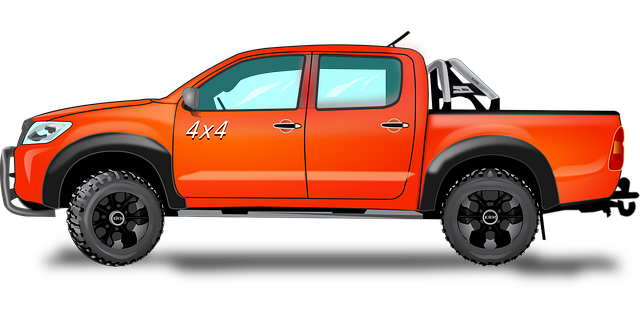ABS (Anti-lock Braking System) sensors in 4×4 vehicles near Pharr are crucial for safe braking on diverse terrains. They monitor wheel speed, preventing wheel lockup and enhancing control during emergency stops. Issues like corrosion or debris buildup can cause ABS warning lights and require sensor replacement. Choosing the right ABS sensor involves compatibility, durability, and accurate readings. Proper installation and regular calibration by a professional mechanic in Pharr ensure optimal performance for off-road adventures.
In the world of 4×4 vehicles, Anti-lock Braking Systems (ABS) sensors play a crucial role in enhancing safety and performance. These sophisticated components prevent wheel lockup during hard braking, ensuring drivers maintain control on slippery surfaces. Understanding ABS sensors is essential for any 4×4 owner in Pharr, especially when addressing common issues or upgrading parts. This article guides you through the basics, their function in 4x4s, troubleshooting tips, selection, installation, and maintenance, empowering you with knowledge about these vital 4×4 components.
- Understanding ABS Sensors: A Basic Overview
- The Role of ABS Sensors in 4×4 Vehicles
- Common ABS Sensor Issues and Troubleshooting
- How to Choose the Right ABS Sensor for Your 4×4
- Installation Process: Step-by-Step Guide
- Maintaining and Calibrating ABS Sensors
Understanding ABS Sensors: A Basic Overview

ABS sensors, or Anti-lock Braking System sensors, are critical components in modern vehicle braking systems, especially in 4×4 vehicles. These sensors play a vital role in enhancing safety and improving control during emergency stops. By continuously monitoring wheel speed, ABS sensors detect when wheels lock up, which can occur due to excessive braking or slippery road conditions. This information is then transmitted to the vehicle’s control unit, enabling it to modulate brake pressure individually to each wheel, preventing locks and skids.
In a 4×4 parts Pharr context, understanding ABS sensors is essential for enthusiasts and mechanics alike. These sensors ensure optimal performance during off-road adventures where varied terrain and unexpected obstacles are common. The ability to maintain control and avoid skidding is crucial when tackling challenging 4×4 trails, making ABS sensors an indispensable part of the vehicle’s safety system.
The Role of ABS Sensors in 4×4 Vehicles

ABS sensors play a crucial role in enhancing the performance and safety of 4×4 vehicles, especially in challenging terrains found in Pharr and surrounding areas with their diverse landscapes. These sensors are integral to the Anti-lock Braking System (ABS), which prevents wheels from locking up during heavy braking, allowing drivers to maintain control on slippery or uneven roads. By continuously monitoring wheel speed, ABS sensors detect when a wheel is about to lock and activate countermeasures, ensuring stable and effective braking.
For 4×4 enthusiasts in Pharr, reliable ABS sensors are essential components in their vehicles’ systems. These sensors contribute to better traction and control during off-road adventures, where terrains can vary from muddy trails to rocky ascents. With robust ABS sensors, 4×4 drivers can navigate treacherous paths with confidence, knowing that their vehicles are equipped to handle unexpected challenges, making their driving experience both thrilling and safe.
Common ABS Sensor Issues and Troubleshooting

ABS (Anti-lock Brake System) sensors are critical components in modern vehicles, ensuring safe and controlled braking. However, like any mechanical part, they can experience issues over time. Common problems include sensor malfunction due to corrosion or debris buildup, leading to ABS warning lights on the dashboard. If your 4×4 parts Pharr vehicle is exhibiting strange braking behaviors, such as pulsing or vague pedal response, it might be a sign of a faulty sensor.
Troubleshooting these issues requires careful inspection and testing. In many cases, cleaning the sensor with compressed air can resolve corrosion-related problems. However, if debris is suspected, replacing the sensor may be necessary. It’s recommended to consult a qualified mechanic for accurate diagnosis, especially in complex 4×4 vehicles, as misdiagnosed issues can lead to more serious safety concerns on Pharr’s bustling roads.
How to Choose the Right ABS Sensor for Your 4×4

Choosing the right Anti-lock Braking System (ABS) sensor for your 4×4 is essential to ensure optimal performance and safety while driving off-road. When selecting an ABS sensor, consider factors such as compatibility with your vehicle model and year, as well as the specific requirements of your 4×4’s terrain capabilities. The right sensor should be designed to withstand harsh conditions, including extreme temperatures, mud, and dust, which are common in Pharr’s off-road trails.
In the market for 4×4 parts Pharr drivers can trust, look for sensors with a proven track record of reliability and durability. Read reviews and consult with experienced off-roaders to narrow down your options. Ensure the sensor is compatible with your vehicle’s existing ABS system and offers accurate readings in varying driving conditions. Proper installation by a professional mechanic is key to guarantee the sensor functions seamlessly with your 4×4’s braking system.
Installation Process: Step-by-Step Guide

Installing ABS sensors is a crucial process for any vehicle owner, especially those with 4×4 rigs in Pharr or nearby areas. Here’s a straightforward step-by-step guide to ensure the job is done right. Begin by identifying the ABS sensor locations, typically found near each wheel hub. Next, gather your tools: a torque wrench, new sensors (compatible with your 4×4 model), and protection gear for safety. Remove the wheels to gain access to the sensors. Use the torque wrench to loosen and remove the old sensors, taking note of their orientation for proper reinstallation later. Clean the mounting areas thoroughly to prevent any interference. Install the new sensors, ensuring they’re securely fastened with the correct torque as per your vehicle’s specification. Replace the wheels and tighten the lug nuts. Test drive your 4×4 to ensure all ABS lights are off, confirming successful sensor installation.
Maintaining and Calibrating ABS Sensors

Maintaining and calibrating ABS sensors is crucial for ensuring optimal vehicle safety and performance, especially in challenging terrains like those encountered in 4×4 vehicles. Regular checks are essential to prevent malfunction, as these sensors play a vital role in monitoring wheel speed and enabling anti-lock braking systems. In the vibrant 4×4 parts market in Pharr, you’ll find various tools and replacement sensors designed to streamline this process.
Calibration ensures that the sensors provide accurate data, which is critical for effective braking control. It’s recommended to calibrate ABS sensors periodically or after any significant maintenance or replacement. This can be done using specialized diagnostic equipment, allowing mechanics to fine-tune the system’s performance and ensure it functions seamlessly in all driving conditions, enhancing safety during Pharr’s diverse terrain adventures.
ABS sensors are indispensable components in modern 4×4 vehicles, ensuring optimal braking performance and safety. By understanding their function, common issues, and proper maintenance, you can keep your 4×4’s braking system in top shape. When selecting ABS sensors for your vehicle, opt for high-quality 4×4 parts from trusted suppliers in Pharr or elsewhere to guarantee reliable operation. Regular calibration and timely troubleshooting will contribute to a smoother driving experience, making these sensors a game-changer for off-road enthusiasts.



